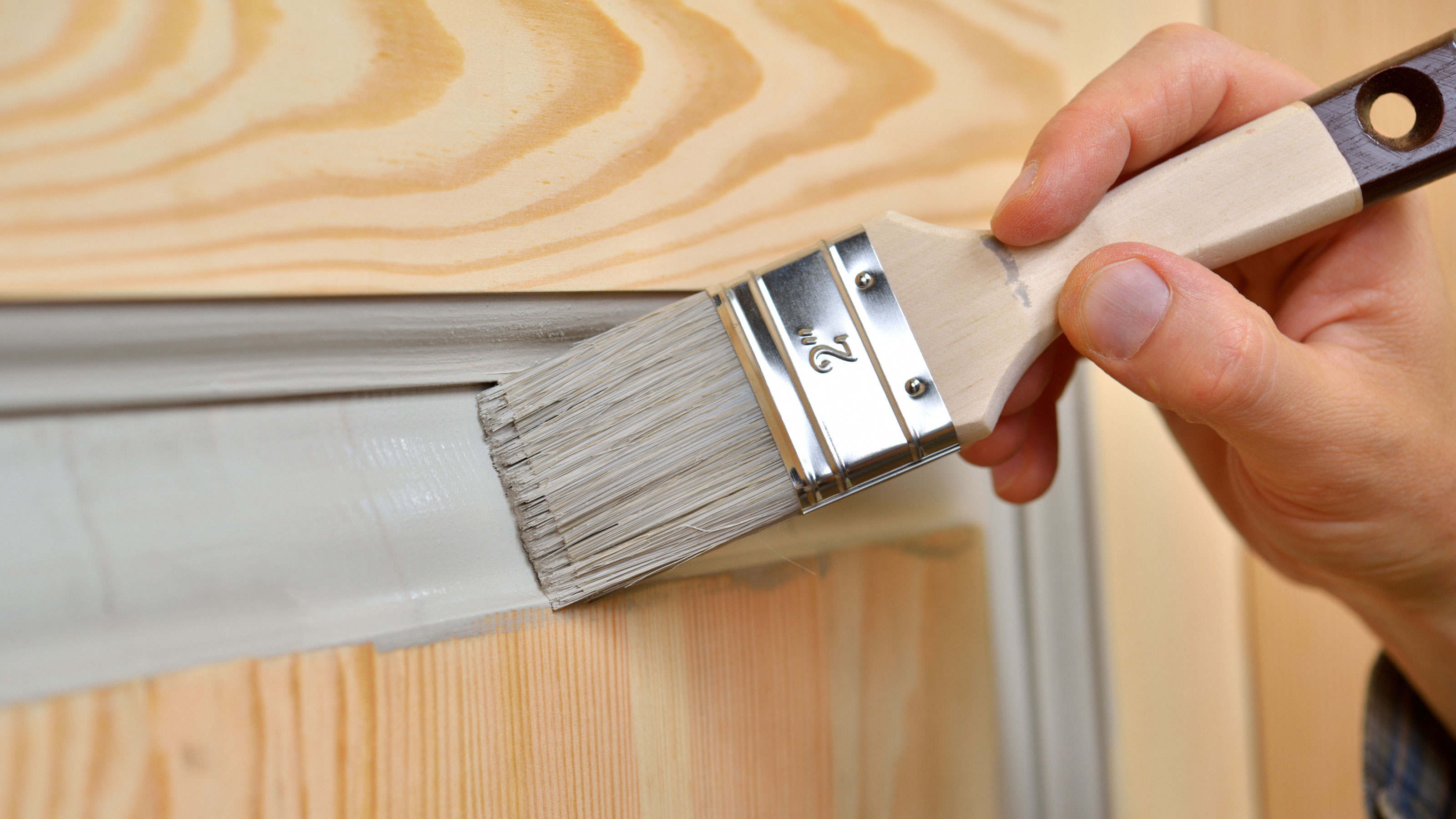How to paint a panel door: Pro tips for the perfect finish
Want to know how to paint a panel door? Here we explore the best techniques, the order you need to paint the door, what brush to use and what paint to use

Learning how to paint a panel door isn’t a difficult DIY exercise, but it's one that you need to do in the right order with the right tools and paint to make sure that you get the best finish. The order is not set in stone but choose a different order and you could struggle to get the best finish — and it will most likely take longer as well.
Painting wood doors with panels is a similar process whatever the size of the panels and whether they have mouldings or not. If you have a door with glass panels, you obviously need to omit these in the painting process, but the order is still the same.
In this guide we lead you through the techniques you need for painting all types of interior panel doors.
How to paint a panel door in the right order
There are effectively five steps to painting a panel door starting at the top. Use a two inch paint brush and a 4-inch roller. Here we show you how to paint a door while it's still hung.
1. Paint edges
Get your brush and paint the top edge and the hinged edge of the door. You can paint the other edge now, but personally I like to leave it until last in case I need to touch or move the door.
2. Paint the panels
Now concentrate on painting the panels. You will want to apply thin coats. Start with the top panel on the left (if right handed) and the right if left handed. If you have mouldings, paint the top in the panel, then left and right and the bottom. If flat (no mouldings) you can use a smaller brush, just try to keep the paint inside the panel. Now paint the rest of the panel.
3. Paint the inside verticals
Now paint the inside verticals — these are the area between the panels, start at the top and work down and finish inline with the bottom of the panels edges.
4. Paint the inside horizontals
Now paint the inside horizontals at the top, middle and bottom. As you go across the horizontal blend with inside verticals. You can do these areas with a brush or roller.
5. Finish up
You will now be left with the two long verticals on the outside left and right. Start by painting the vertical on the hinged side. Start at the top and work down. Finally, paint the other outside vertical to finish. Do the outside edge, if you didn’t do it in step 1.
Now repeat this process for the undercoat and top coat which is typically a toss up between satin vs gloss. If you want high sheen choose gloss; if you want a more subtle finish choose satin.

What paint do you use on wooden doors?
There are typically three or four types of paint used on a door — primer, undercoat, gloss or satinwood. If you are painting a bare wood door you will need to start with a primer to help seal the wood. Then you will need one or two coats of undercoat. You can buy primer/undercoats such as Crown's Contractors' Quick Undercoat which will do a good job.
Once the primer and undercoat have been added it is time to add the top coat. The best gloss paint will leave a durable high sheen finish that is easy to wipe clean. For a more subtle mid sheen try a satinwood finish.

Do I need to sand panel doors before painting?
Whether you have a bare wood door or a previously painted door you will need to sand before painting to get the best finish. That said, new bare wood doors shouldn’t need much rubbing down.
Get a fine grit sandpaper – P180 is good – and remove any rough edges and give a quick rub down across the whole door. When you have finished sanding, brush down the door with a stiff brush and/or vacuum. Finish by wiping down with a damp cloth.
For previously painted doors there will be a little more sanding involved. Fill any holes and dents with a suitable wood filler — Everbuild Multi-Purpose Wood Filler is a good choice. Use a P80-120 grit sandpaper to get rid of the worst of the lumps and bumps and then go over with a P180 grit sandpaper to finish. Use an electric hand sander if you have one to speed up the process.

Should you paint a panel door while it's hanging?
Typically if you are painting or repainting a door it is easiest to paint while it is still hanging on the frame. You won’t need to remove the door and set up a space to paint it. If you are painting both sides of the door you won't have to wait for the paint to dry on one side, before turning over to paint.
The one downside to painting a door while it is still hanging is that you won’t be able to paint the bottom edge. If it's a new door, you need to paint the bottom edge so you will need to remove the door. But after the bottom edge has been painted once you can leave the next time you repaint the door.
There is a trick for painting both sides of a door. Get a couple of 3 or 4-inch screws and place them in the middle of the top and bottom edge of the door. Now balance the door on a couple of saw horses.
This allows you to spin the door to paint both sides and all edges. To keep it steady add a screw either side of the centre screw. Remove these when finished one side, spin the door to the unpainted side and replace the screws.
Is it better to paint a panel door with a brush or roller?
You will definitely need a paint brush to paint a panel door, but you can use both. You will need a paint brush to get into the edges of the panels. Use a one or two inch brush depending on the type of panel edges and mouldings. For simple flat edges use a smaller brush.
For the flatter parts of the door, i.e. the middle of the panels, top and bottom rails and the uprights (mullion and stiles), you can use a four-inch roller. A short pile roller will leave a little texture while a foam roller will offer a smoother finish.
Once you have finished you need to know how to clean paint brushes and how to clean paint rollers properly to ensure they stay in good condition for the next job.

How long should I leave a panel door open after painting?
This will depend on what paint has been used to paint the door. A water-based paint will dry much quicker than an oil-based paint. Typically a water based paint will be touch dry in an hour or two and fully dry in six to eight hours. An oil-based paint will be touch dry within four hours and dry within 16-24 hours.
You are best to leave a door open for as long as possible. The longer the paint has to dry the more durable it becomes. Find out more about drying times with our how long does paint take to dry guide.
Get the Homebuilding & Renovating Newsletter
Bring your dream home to life with expert advice, how to guides and design inspiration. Sign up for our newsletter and get two free tickets to a Homebuilding & Renovating Show near you.
Steve Jenkins is a freelance content creator with over two decades of experience working in digital and print and was previously the DIY content editor for Homebuilding & Renovating.
He is a keen DIYer with over 20 years of experience in transforming and renovating the many homes he has lived in. He specialises in painting and decorating, but has a wide range of skills gleaned from working in the building trade for around 10 years and spending time at night school learning how to plaster and plumb.
He has fitted kitchens, tiled bathrooms and kitchens, laid many floors, built partition walls, plastered walls, plumbed in bathrooms, worked on loft conversions and much more. And when he's not sure how to tackle a DIY project he has a wide network of friends – including plumbers, gas engineers, tilers, carpenters, painters and decorators, electricians and builders – in the trade to call upon.

